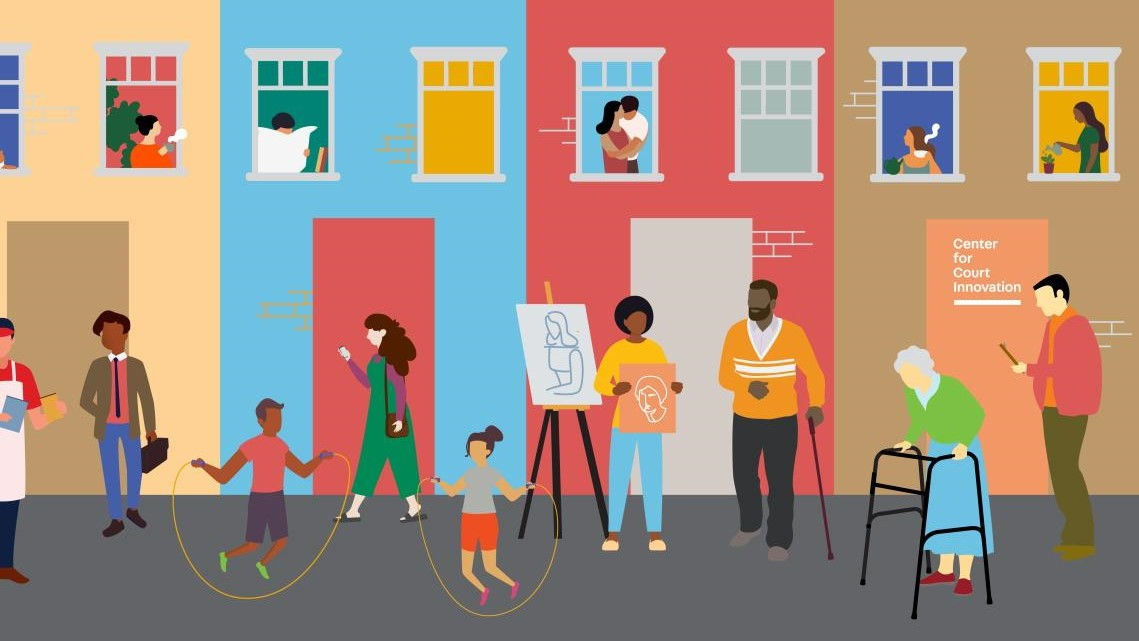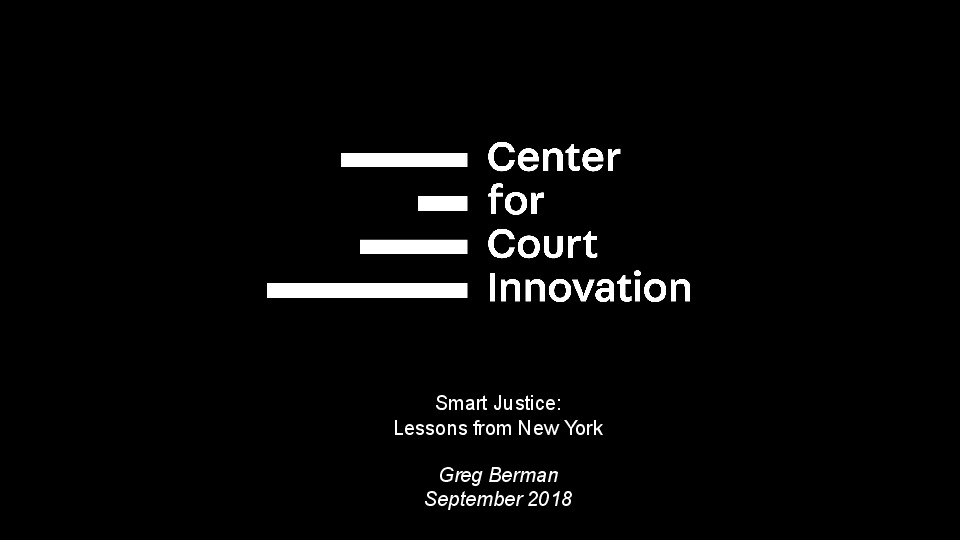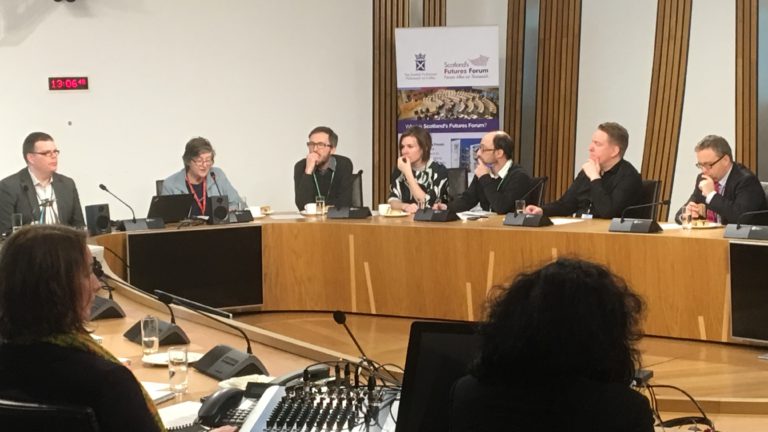Smart Justice: Lessons from New York
Wednesday 26 September 2018, at the Scottish Parliament
Hosted jointly with Community Justice Scotland and the Scottish Parliament’s Justice Committee, this Futures Forum seminar featured a presentation by Greg Berman, Director of the Center for Court Innovation in New York, on his approach to smart justice.
Greg outlined the work of the Center for Court Innovation, in particular in Red Hook in Brooklyn, and the lessons they’d learned along the way.
Red Hook, Brooklyn
Greg introduced the case study of Red Hook in Brooklyn, a neighbourhood surrounded on three sides by water and home of one of New York’s largest public housing developments.
The Red Hook Community Justice Center encompasses
- Criminal Court, that deals with approximately 6,600 criminal cases per year – includes summonses, misdemeanors, and selected non-violent felonies
- Family Court: approximately 60 juvenile delinquency cases per year
- Housing Court: approximately 1,000 filings per year (cases from Red Hook Houses)
The goal was agreed to identify and address the issues that bring people to court. In less serious cases, this meant short-term groups and community service. In more serious cases, this meant comprehensive assessments from on-site social workers for issues involving substance abuse, mental health, trauma, abuse, with rigorous compliance monitoring by the court
Outside the Courtroom, the Justice Center engaged the public in a variety of programs designed to prevent crime, including community clean-up events, youth development projects, and peacemaking.
Greg noted the results, which had been outlined by independent evaluators who tracked 3,000 defendants from Red Hook and conventional court for two years:
- Incarceration: Only 1% of the cases receive jail sentences at arraignment.
- Fairness: Offenders at Red Hook were more likely to perceive the judge’s decisions as fair than offenders in the comparison group.
- Recidivism: Adult offenders at Red Hook were 10% less likely to be re-arrested than offenders who went through conventional court; juveniles were 20% less likely to be re-arrested.
Lessons from the experience
Greg noted a series of important lessons from the experience
- The need for procedural justice: those interacting with the court are treated like humans.
- The importance of training, including for court staff on community engagement
- Architecture matters: many courthouses are designed to intimidate users, so tweaking architecture can send powerful non-verbal messages.
- The importance of mission and messaging: “Improving relations between the justice system and the local community” has been an explicit part of the rhetoric of the Red Hook Community Justice Center from the start.
- Measuring results: the Center made a sustained investment in documenting public attitudes through surveys and focus groups, which helped provide results.
- Respect the front lines: “Policy implementation in the end comes down to the people who actually implement it.”
- Don’t Overpromise: reductions in recidivism of 15-20% only happen when everything is aligned – greater increases are unlikely.
- Failure Is Part of the Process: we need to allow police chiefs to admit failure and try something different.
- The Case for Radical Incrementalism: As noted by Adam Gopnik in the New Yorker, “Merely chipping away at the problem around the edges’ is usually the very best thing to do with a problem; keep chipping away patiently and, eventually, you get to its heart.”
The Center for Court Innovation
The Center for Court Innovation is a non-profit organisation that seeks to create a more effective and humane justice system by designing and implementing operating programs, performing original research, and providing reformers around the world with the tools they need to launch new strategies.
Originally founded as a public/private partnership between the New York State Unified Court System and the Fund for the City of New York, the Center creates operating programs to test new ideas and solve problems, performs original research to determine what works (and what doesn’t), and provides expert assistance to justice reformers around the world.
Attendance
The following MSPs attended the event:
- Margaret Mitchell MSP (Justice Committee Convener)
- Rona Mackay MSP
- John Finnie MSP
- Jenny Gilruth MSP
- Daniel Johnson MSP
- Liam Kerr MSP
- Liam McArther MSP
- Maurice Corry MSP








